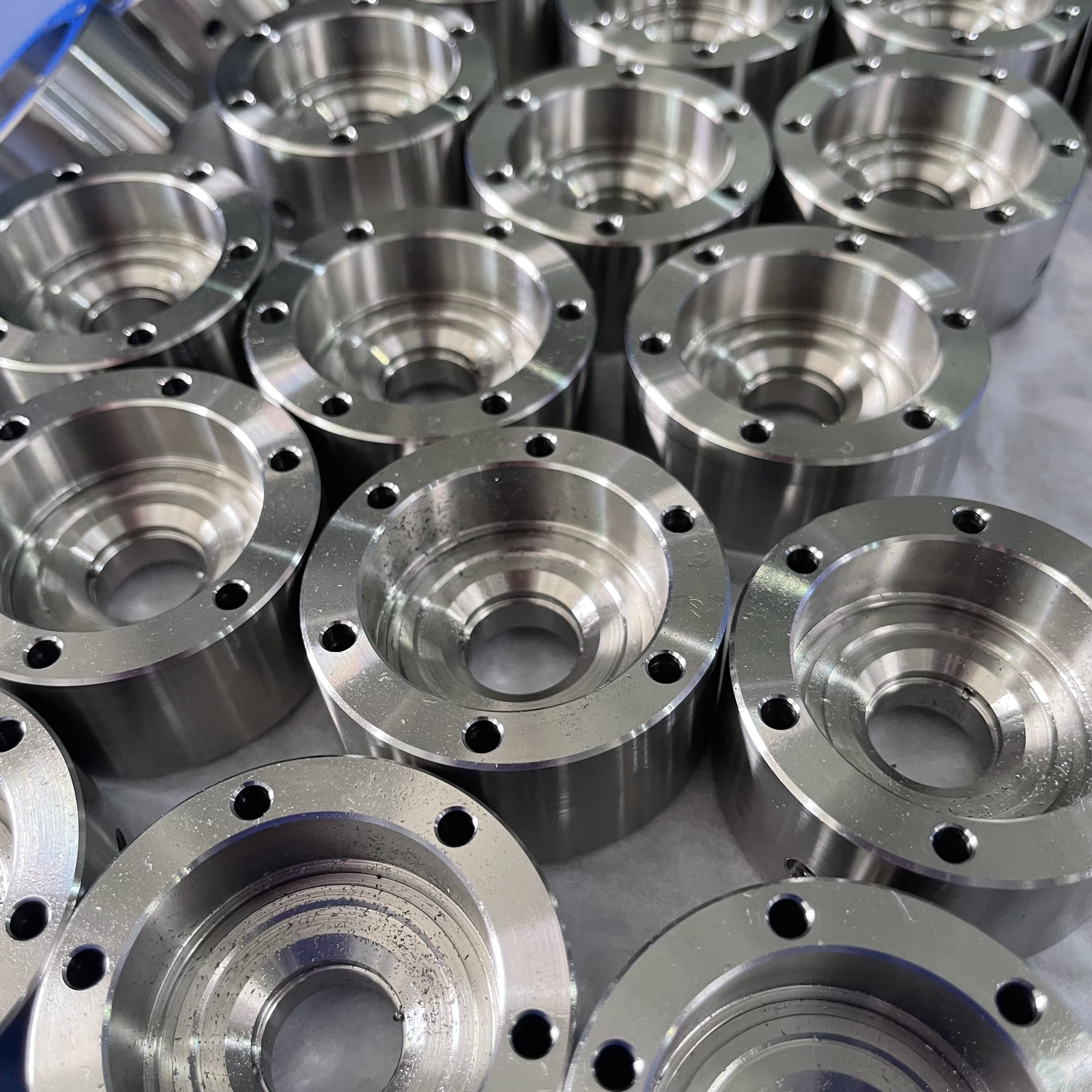Mastering Precision: A How-To Guide for CNC Programming and Machining Processes

Entering the World of CNC: An Overview
CNC, or Computer Numerical Control, is a revolutionary technology that has transformed modern manufacturing processes. CNC code plays a pivotal role in automating and controlling machine tools, such as lathes, mills, routers, and grinders. This precise and efficient method of production has significantly impacted various industries, from automotive and aerospace to healthcare and electronics.
The Role of CNC in Modern Manufacturing
The implementation of CNC technology has redefined the manufacturing landscape by enabling unparalleled precision, consistency, and productivity. By utilizing CNC code, manufacturers can produce intricate components with tight tolerances, leading to higher quality end products. Moreover, CNC machines can operate continuously with minimal human intervention, resulting in improved efficiency and reduced production lead times.
Basics of CNC Machine
CNC machines come in various types, each designed for specific applications based on their unique capabilities. Some common types include CNC milling machines, lathes, plasma cutters, and electric discharge machines (EDM). These machines are utilized for tasks such as cutting, drilling, shaping, and finishing raw materials like metal, plastic, wood, and composites. Understanding the basics of CNC machine programming is essential for harnessing the full potential of these advanced tools.
Types of CNC Machines and Their Uses
CNC Milling Machines: Ideal for creating complex 3D shapes and profiles.
CNC Lathes: Used to produce cylindrical parts like bushings and shafts.
Plasma Cutters: Employed for precision cutting of metal sheets using a high-velocity jet of ionized gas.
Electric Discharge Machines (EDM): Utilized for intricate machining through electrical discharges between the tool and workpiece.
The Fundamentals of CNC Programming
As I delve into the world of CNC programming, it becomes evident that understanding how CNC machines interpret instructions is crucial for achieving precision in manufacturing processes.
Understanding CNC Programming Work
CNC Coding: The Language of Machines
When it comes to CNC coding, it serves as the language through which machinists communicate with the CNC machine. This specialized code contains a series of alphanumeric instructions that dictate the movements and operations of the machine, guiding it through intricate tasks such as cutting, drilling, and shaping raw materials. Mastery of CNC coding empowers programmers to precisely control every aspect of the machining process, ensuring the creation of accurate and high-quality components.
Essential CNC Machine Programming: Getting Started
Embarking on the journey of CNC machine programming requires a solid foundation in understanding geometric dimensions, tolerances, and material properties. It involves translating engineering drawings and designs into actionable instructions for the CNC machine to execute. Aspiring programmers must grasp fundamental concepts such as tool selection, cutting speeds, and feed rates to optimize machining operations for superior precision.
CNC Programming Software and Tools
Simplify CNC Machine Programming with the Right Software
The evolution of technology has introduced advanced CNC programming software packages that streamline the programming process. These software solutions offer intuitive interfaces, allowing programmers to generate complex toolpaths and simulate machining operations with ease. Additionally, some software integrates seamlessly with Computer-Aided Design (CAD) systems, enabling seamless transfer of design data for efficient CNC milling machine programming. Investing in proper CNC programming software equips professionals with the tools needed to unleash their creativity while ensuring accuracy in part production.
Advanced CNC Machine Programming Techniques
As we progress into the realm of advanced CNC machine programming methods, it's essential to explore the diverse approaches and techniques that contribute to precision manufacturing.
Types of CNC Programming
Manual CNC Programming vs. CAM
When it comes to CNC programming, there are two primary methodologies employed: manual programming and Computer-Aided Manufacturing (CAM) systems. Manual CNC programming involves directly inputting G-codes and M-codes to create part programs, providing a high level of control over the machining process. On the other hand, CAM systems utilize advanced software to generate toolpaths and automate the creation of CNC programs based on 3D models or 2D drawings. This approach simplifies complex machining operations and enhances efficiency by reducing manual intervention.
Conversational Programming: Making CNC Programming Easy
Another innovative method in CNC machine programming is conversational programming, which enables machinists to interact with the machine tool directly through a user-friendly interface. This intuitive approach allows operators to input task-specific CNC programming codes without extensive knowledge of G-code or CAM system programming. Conversational programming streamlines the creation of part programs for common machining tasks, making CNC machine programming easier and more accessible to a wider range of users.
Precision Parts and CNC Machining Process
Achieving Precision in CNC Milling and Turning
The pursuit of precision in CNC machining process is paramount for producing high-quality components with tight tolerances. In milling operations, machinists leverage advanced CAM software to generate intricate tool paths that systematically remove material from workpieces, resulting in precise shapes and dimensions. Similarly, in turning processes, expert CNC programmers use CAM systems to create optimized tool paths for cutting cylindrical parts with exceptional accuracy.
Customize CNC Machine Feed Rates for Optimal Performance
Fine-tuning CNC machine feed rates is a critical aspect of achieving precision in machining operations. By adjusting the feed rates based on material properties, tool characteristics, and cutting conditions, operators can optimize performance while maintaining part quality. This meticulous customization ensures that the cutting tools engage with the workpiece at optimal speeds, minimizing tool wear and enhancing overall machining efficiency.
Precision in Practice: Real-World Applications
As we delve into the realm of CNC machining, it's crucial to explore its real-world applications and the impact it has had on various industries.
Case Studies: Success Stories in CNC Machining
One remarkable success story in CNC machining revolves around the creation of precision parts for aerospace components. The journey from concept to creation involves meticulous planning, precise programming, and advanced machining techniques. By leveraging CNC technology, manufacturers can produce intricate components with exceptional accuracy, meeting the stringent requirements of aerospace engineering. The ability to consistently deliver precision parts has positioned CNC machining as a cornerstone of innovation in the aerospace industry.
Another compelling case study showcases the role of CNC machining in medical device manufacturing. From orthopedic implants to surgical instruments, CNC technology plays a pivotal role in producing precision parts that adhere to strict regulatory standards. The seamless integration of CAD/CAM software with CNC machines enables medical device manufacturers to achieve unparalleled levels of accuracy and consistency, ultimately contributing to advancements in healthcare.
Support Love Insightful Funny: Learning from Mistakes
In the dynamic world of CNC programming and machining, learning from mistakes is an integral part of professional growth. Understanding common pitfalls and challenges can empower aspiring CNC programmers and machinists to enhance their skills and strive for continuous improvement.
Common CNC Programming Pitfalls and How to Avoid Them
Overlooking Tool Selection: One common pitfall is overlooking the importance of selecting the right tools for specific machining operations. Failure to consider factors such as tool material, geometry, and cutting speeds can lead to suboptimal performance and compromised part quality. To avoid this pitfall, thorough research and consultation with tooling experts are essential for making informed decisions.
Inadequate Feeds and Speeds Optimization: Improper optimization of feeds and speeds can result in tool wear, poor surface finish, or even machine damage. Machinists must prioritize understanding material properties, cutting conditions, and tool characteristics to optimize feeds and speeds effectively. Utilizing manufacturer recommendations or conducting test cuts can aid in achieving optimal machining parameters.
Neglecting Toolpath Simulation: Failing to simulate toolpaths before actual machining can lead to costly errors and rework. Modern CAM software offers simulation features that enable programmers to visualize tool movements, detect potential collisions, and verify part quality virtually. Embracing this practice minimizes risks associated with unexpected issues during production runs.
Inaccurate Workpiece Fixturing: Inaccurate workpiece fixturing can compromise part alignment and dimensional accuracy during machining processes. Thorough inspection of fixtures, proper clamping techniques, and validation through trial runs are essential steps in ensuring stable workpiece positioning throughout manufacturing operations.
Lack of Documentation: Neglecting comprehensive documentation of part programs and process parameters can hinder repeatability and troubleshooting efforts in the future. Maintaining detailed records of program revisions, setup instructions, tool lists, and inspection reports facilitates efficient production management while providing valuable insights for process optimization.
By acknowledging these common pitfalls and implementing proactive measures to mitigate risks, CNC programmers can elevate their expertise while fostering a culture of continuous learning within the precision manufacturing landscape.
Wrapping Up: Key Takeaways and Next Steps
As we conclude this comprehensive guide to CNC programming and machining processes, it's essential to recap the key insights and outline the next steps for aspiring CNC programmers.
Recap of Key CNC Programming and Machining Insights
Throughout this guide, we've delved into the intricate world of CNC technology and its profound impact on modern manufacturing. We've explored the fundamental principles of CNC machine operation, the nuances of CNC coding, and advanced techniques for achieving precision in machining processes. From understanding the role of CNC in revolutionizing manufacturing to uncovering common pitfalls in CNC programming, we've equipped ourselves with a wealth of knowledge essential for mastering precision in part production.
Continuing Your Journey in CNC Mastery
As you embark on your journey towards mastering CNC programming and machining, it's crucial to leverage resources and engage with communities that foster learning and professional development.
Resources and Communities for Aspiring CNC Programmers
Online Learning Platforms: Explore reputable online platforms offering courses, tutorials, and certifications tailored to CNC programming and machining. These resources provide structured learning paths, practical exercises, and industry-relevant insights to enhance your expertise.
Industry Forums: Engage with fellow CNC enthusiasts and professionals on industry-specific forums dedicated to precision manufacturing. Participating in discussions, seeking advice, and sharing experiences can broaden your perspective while connecting you with like-minded individuals passionate about advancing their skills.
Professional Associations: Consider joining professional associations or organizations focused on CNC programming and machining. These groups offer networking opportunities, access to industry events, and valuable resources that can enrich your understanding of emerging trends and best practices in the field.
By actively immersing yourself in these resources and communities, you'll continue to refine your skills, stay abreast of industry advancements, and contribute to the ever-evolving landscape of precision manufacturing.
See Also
Becoming an Expert in CNC Turning: All You Must Understand
Mastery of CNC Milling: Procedures, Machinery, and Uses
Perfecting CNC Milling for Accurate Parts Manufacturing
Guide for Beginners in CNC Turning: Unraveling Precision Machining
Differentiating Precision Machining and General CNC: An In-Depth Manual
About US
Follow Us
Your prototype holds unparalleled significance, and we deeply value its uniqueness. Collaborating with you during the preparation phase for running your prototype or parts is a commitment we gladly embrace. Whether it's a single part or a complex assembly, we are dedicated to selecting the optimal tools and pathways to bring your envisioned product to life.
At Precision Fab CNC Machining, we specialize in producing parts for prototypes, short runs, and high-volume production. Our prototyping machine capabilities extend across metal, plastic, and wood machining, with welding fabrication services available to complement and finalize your prototype if required.
Address
Address: Room320 10F, Building A,Nanshan international building, Dayawan District, Huizhou, Guangdong, 516001 China
Contacts
billy@timaycnc.com

